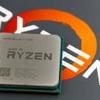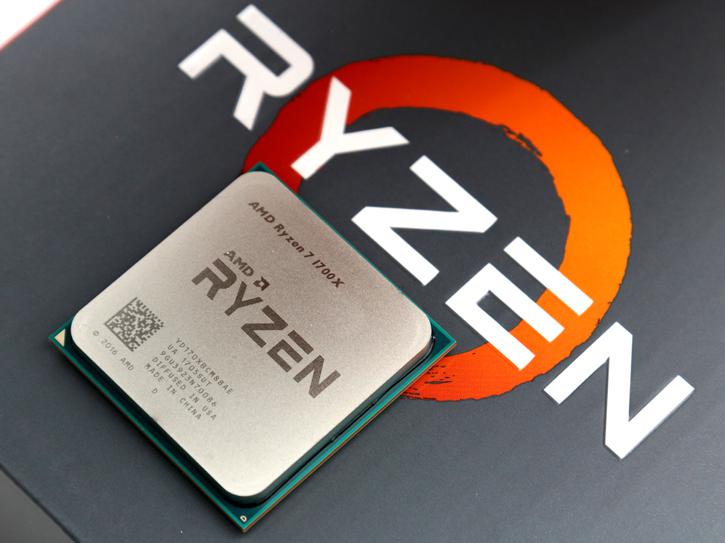Conclusion
The Final Words
For this review we peeked at the most affordable 8-core Ryzen 7 processor from AMD, the 1700. Quite honestly, this processor oozes value as at 329 USD this likely is the processor to get. It again is short from amazing to see how fast this processor really is, yes even this 3.0 Ghz base-clock one. It is equally baffling to see as to why this kind of performance does not translate to CPU bound gaming situations. It could be the thread-scheduler, memory related or well anything really. let's hope Windows and perhaps the games over time will get better optimized as one thing is certain, these processors are pretty darn terrific and this 329 USD model even boost towards a 3.7 Ghz turbo.
The Experience
Intel’s biggest worry isn’t Ryzen, it’s the fact that Intel has been charging a lot, maybe even too much money for their processors for years now, with little innovation. Intel has become increasingly aggressive as hey, their desktop processors sell anyway. This results in a generic dislike towards Intel from a lot of people. This gives AMD an extra advantage as there is a proper amount of goodwill that people have towards this company. People like the underdog, especially when they bring something to the table that really impresses. So yes, if AMD plays their cards right and do not overprice their processors, they may have a colossal win at hand. That said I am also issuing a bit of a warning: we have no doubt that with the new generation processors and chipsets there are bound to be a few motherboard firmware updates and fixes for smaller bugs. Hey, it comes with the territory. We quite honestly did not run into stuff that worried us. The motherboard used seems pretty well tuned, we had no stability issues or any weird perf drops. We deliberately tested with a competing videocard (Nvidia versus AMD) as well, here again the performance is fine.
The RAW Performance
Overall we like what we are seeing with the Ryzen 7 1700, the per core performance most certainly is good enough for what and where it needs to be, especially in this price category. Realistically the performance overall hits an terrific even baffling sweet-spot. Combined with 3.7 GHz Turbo frequencies these processors shine bright. But do you need an 8-core processor for gaming? Well, probably not. But we had the very same discussion moving from two to four cores remember? So if you hang on to that thought, would you purchase a dual-core processor over a four-core one? Nope, and along these lines you need to think as we need to advance in hardware, the software will then follow in this technological evolution. I also do know that a setup like this could last you years as, again, the IPC perf is really good and you have many threads available. Since processors seem to reach frequency walls in SMT based processing, even for games it is a growing thing. Also think DirectX 12 and Vulkan here for a second, the new render APIs benefit from threaded processing.
The Gaming Performance
We placed our finger at a sore spot with the first review on Ryzen 7, which was the 1800X, game performance in situations where you are not GPU bound compared to Intels faster quad-cores is the Achilles heel of the Ryzen 7 series. In our 1700X review we focussed in at disabling SMT (hyper-threading), which does bump up performance in some games. So there's definitely something for AMD to work on. SMT however is not the biggest culprit. It might be by design, it might be a bug, we honestly are not certain as to why games behave the way they do with Ryzen 7. I keep thinking it is a latency issue inbetweeen the two CCXes. Game performance overall is good though and remember we tested with a GeForce GTX 1080 that starts to get GPU bound at 2560x1440. But sure there is room left for improvement from the AMD side. I've stated this in the 1700X and 1800X review as well, it feels like something what Nvidia has been fighting a while ago, a DPC latency issue of some kind. We do find Ryzen 7 to be rather memory bound with fairly high memory latency in the 80 to 100ns+ ranges depending on your configuration. It is what it is though, the performance definitely is good enough for what it needs to be if you are not into high-end and enthusiast class graphics card gaming. But currently at 1080P or any gaming CPU bound situation with a fast enough GPU the performance lacks a little compared to where it needs to be and can be. For the time being we will give AMD the benefit of the doubt here, the platform is young and everything is new, heck it might even be Windows 10 related. The processor certainly is fast enough compared to the Intel 59xx / 69xx counterparts. We will keep an eye on this and when we have to report anything about it we'll update this content. And also in closing on this topic, if you are a little GPU bound or use 2560x1440, this pretty much is a non-issue as perf there is top notch for what the processor needs to deliver.
The Bad
If I may nitpick just a little bit then two things I find to be a bit of a mystery. Firstly, I simply would have liked to have seen quad-channel memory support. When you test a processor that is fighting the Core i7 6x00K series from Intel, you would want it to have quad-channel support on the platform. It most likely was a cost saving feature as it would have required additional IO and memory controllers and more data-paths. A true fact is also that 95% of you guys that will use, say, anything from 2133 MHZ to 3200 MHz memory with two DIMMs, and you will be totally fine with the memory bandwidth as it really isn't going to restrict you with gaming aside from a 2, maybe 3% differential (at the normal gaming resolutions). It is however the content creators and video transcoders that will make a different call as there quad-channel memory really kicks in. My second remark is that i would have liked to see some more PCIe Gen 3.0 lanes on the CPU. The Ryzen processor has 24 of them, four are tied and thus linked to the chipset which leaves 20 lanes. If you run a properly fast NVMe M.2 SSD another four are used, leaving 16 for the the graphics card. Thus, in Crossfire or SLI you would be looking at two x8 PCIe Gen 3.0 lanes. Here again, that's plenty of bandwidth sure, but if AMD wanted to go that extra mile against Intel then I certainly would have appreciated two full x16 Gen 3.0 lanes. Tied to four Ryzen PCIe 3.0 lanes is the chipset, and here we find a flaw. The chipset adds PCI express lanes but they are Gen 2.0 and not Gen 3.0. This gives Intel another competitive advantage when comparing to the upper range Core i7 6000 series. For example, a secondary M.2 device would have to be linked through the chipset (as there is no room left on the processor with the graphics card utilizing a x16 PCIe link), and there your NVMe storage unit immediately runs into a restriction as the available bandwidth was just cut in half. A 3.2 GB/sec M.2 unit would do 1.6 GB/s on that connection. Still, not bad but again, wouldn't AMD like to be a step ahead of Intel? Ergo I am not happy about the fact that the chipset does not offer any PCI-Express 3.0 lanes, not even the slightest bit. Again, if you are planning to use just one high-end graphics card, one super-duper fast M.2 unit and then HDDs or SSDs for storage this entire paragraph would be irrelevant, also multi-GPU setups seem to be dying a slow death so that makes this even more irrelevant, that is the honest truth as well.
The Memory
The AMD Ryzen platform supports DDR4 1866, 2133, 2400 and even 2667 MHz straight out of the box with two DIMMs. Higher frequencies are motherboard dependant. With the initial releases you should be able to see 3200 MHz supported (OC) but we have already noticed 3766 MHz from some partners. Honestly, take a nice low latency kit as the memory frequency is not the most important thing. We are however a little surprised that AMD did not decide to go with quad-channel as an offering. It's a really cheap way to gain incredibly high memory bandwidth, even with 2133 Mhz modules. See, the higher clocked memory DIMMs are expensive and while they do offer better bandwidth, the performance increases in real-world usage will be hard to find. Unless you transcode videos over the processor a lot. DDR4 mostly was released for lower voltages and higher frequencies. 2,133 MHz CL 14/15/16 memory in combo with dual-channel will get you to 30~35 GB/sec. For gaming you will not notice huge performance improvements with higher memory bandwidth, but with content creation and video transcoding this kind of bandwidth certainly does make a difference. If you populate your Ryzen PC with four DIMMs, at the time of writing this article you are restricted to 2400 MHz modules. That number will go up once the motherboard BIOSes get more mature. So that is not a memory controller problem, more of a time restrictive thing for this rather fast launch. As always, my advice would be to go with lower clocked DDR4 memory with decent timings, but get more of it. Don't go for 8 GB, we find 16 GB the norm for a gaming rig these days. So for now, stick to two DIMMs at 8 or 16 GB per DIMM. We know the board partners are hard at work adding memory compatibility, we strongly suggest you check the QVL (Qualified Vendor List that shows compatible products) at the motherboard partner website to see what is compatible and then base your memory purchase on that. We advise you to simply insert memory frequency, timings and voltages manually for now.
The Power
With eight cores I was expecting this processor to be a power hog, but AMD's focus for the past years has been making smaller fab processes with, in the end, more energy efficient products. With this processor now fabbed at 14 nm FinFET the TDP sticks at a low 65 Watts and with the system at idle I was a little shocked, with a GeForce GTX 1080 installed / 16 GB memory / SSD and the X370 motherboard I hovered at just under 50 Watts. That's just great and that is testimony to the 14nm fabrication as smaller packages can do with less voltage. When we stressed the processor with a Prime 1024M run we reach roughly 125 Watts, that's low enough for what it needs to be, but we do find it higher than expected. Overall though this is impressive to see. When we game we hover at ~250 Watts, but obviously that factor is dependant on the type of graphics card you use of course. So yeah, these are really good values with a many core product. No complaints here whatsoever.
The Tweak
For the 1700 we followed a request asked in our forums, we used just the Noctua heatpipe based cooler for overclocking. We reach a stable 4.0 GHz at ALL cores. With proper liquid cooling and a lucky 1700 we have no doubt that you will reach the 4.1 GHz on all eight-cores as well. After that number things will start to get complicated though. The Ryzen 7 1700 is easy to overclock, you could increase the voltage but we advise the AUTO voltage mode really. Then select your multiplier of choice and you are good to go.
The Conclusion
The 329 USD pricetag for Ryzen 7 1700 is golden. Seriously, this processor outs tremendous performance levels, especially multi-threaded performance kicks ass. We however are clueless as to why and how Ryzen is not performing well enough in gaming. I do need to be more specific here though, the lower performance gaming numbers are not spotted in all games. But when you get rid of the GPU bottleneck (and thus install an incredibly fast graphics card) and then go to a lower resolution there the problem will manifest itself. And that just doesn't make any sense as on actual CPU testing e.g. Cinebench or whatever you throw at these processors, the Ryzen 7 series hauls ass. It could be the lack of memory channels, cache latency issues, thread scheduling, heck it can even be Windows 10 here. However the problem is there, we just don't know the exact casue of it. It's not a massive problem but sure, it is what people look at and base decisions on. Let's hope AMD will have an answer to this complication soon enough as the Ryzen 7 series deserves so much more than just the focus on this issue. So yes, I like the Ryzen 7 1700 really, quite a lot actually. It is 170 USD cheaper compared to the 1800X and performance really isn't that far off. It will reach close to the same tweaking levels also. The 1700 can do 4 GHz on all cores, hack we demoed that and we cooled it with a simply Noctua air based cooler.
The step upwards to Ryzen 7 for the folks that actually need and waited for a well deserved upgrade, the guys that have been waiting for a price/perf competitive 8-core processor series and the intent to give AMD some well-deserved support after a couple of gruesome years. In the weeks and months to come AMD will release 6-core and, later on, 4-core Ryzen processors as well. These are incredibly fascinating and exciting times for AMD. Now we find the number of PCIe 3.0 lanes rather skinny, and the chipset lanes to be sober at Gen 2. Next to that, the Ryzen processors do not offer quad-channel memory support which we feel is a miss. Also I need to make one more remark on memory, if you like to go with high frequency memory, say, 3200 MHz, you need to stick with two DIMMs for now. There is still a lot of tweaking to be done at BIOS level with a platform this young. Our sweet spot and recommended memory would be 2667 MHz at say CL16. We have no doubt that a four DIMM high frequency configuration will be supported at a later stage though. But for now four DIMMs at 2400 MHz would be the maximum (depending on motherboard manufacturer). Please base your memory purchase choices on what the motherboard manufacturer advises (check their QVL list). Your sweet spot memory might be 2667 MHz with two DIMMs. Configure the memory manually in the BIOS (freq/timings/voltage) and you should be on your way. Right, that said and done I think this conclusion page has had enough information for you to chew over. For me it is simple: If you never could afford the E series Intel platforms, here’s your chance my man as Ryzen 7 and an X370 or B350 motherboard will ooze offer value with similar to sometimes even better performance and similar features to what the competition offers. We reiterate, game performance is not where it needs to be in 1080P. We so hope this will be fixed or at the very least improved with firmware and software updates as the per core performance that Ryzen offers simply shows that the processor could do it. The Ryzen 7 1700 is a massive win and if you like a little extra bite out of the processor, simply set your multiplier at 40, the memory at 2667 MHz and leave the rest at default and you'll be pretty amazed as to what this setup offers. Value for money wise, not only are the processors are much cheaper, the motherboards and chipsets are as well. So bang for buck wise this a no brainer really.
We're following the performance metric on CPU bound gaming closely. We so very much hope that AMD can address that and the minute they will, we'll revisit all the gaming benchmarks. 90% of the content in this article and conclusion is similar to the 1700/X1800X as hey, they are pretty much the same thing yet clocked slightly lower. Paired with the right motherboard we feel it could be a great deal that once again oozes value. Also let me remind you that if you cannot afford a GeForce GTX 1080 or Radeon R9 Fury X, please do understand that the gaming issues mentioned are not relevant to you. With the current performance bracket a GeForce GTX 1060 or Radeon RX 480 would be a fantastic match combined with this gem of a 329 USD processor.
ATH +++
- Hilbert out
- Sign up to receive a notice when we publish a new article
- Or go back to Guru3D's front page.
“A mind needs books as a sword needs a whetstone, if it is to keep its edge.”



